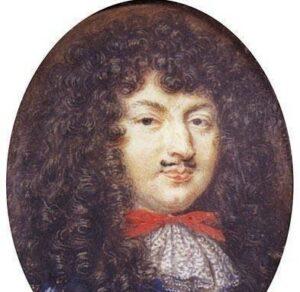A family of Protestant painters
Louise Moillon, who was born in Paris in 1610, came from a family of Protestant painters, but she was the only one to achieve true success. Her father, Nicolas Moillon, an artist, died in 1619. The following year her mother married a Protestant still-life painter, François Garnier : from his title, “a bourgeois from Paris”, he appears to have been a wealthy man. He sold pictures, working with the artists in Saint-Germain-des Prés. She learnt the rudiments of painting from her father, then continued her professional training with her father-in-law. When her mother died in 1630, Louise had already completed many still lives, featuring baskets and dishes of fruit, vegetables and vases of flowers – sometimes people were also included in these pictures (The lady selling fruit and vegetables, 1630, Louvre). She was one of the most esteemed French still life painters in the XVIIth century and also one of the most well known women painters of her time, leaving to posterity about forty pictures, which were mostly painted between 1630 and 1640.
In 1640, she married Etienne Girardot de Chancourt, a wood merchant, who came from a Huguenot family in Burgundy.
The Revocation
The terrible troubles following the edict of Fontainebleau were to hit the Girardot family very hard indeed. They were threatened, the king’s soldiers (“dragoons”) were billeted in their home, members of the family were tortured, the children had to go into exile – all this deeply affected Louise. Her husband was sent to prison but this did not shake his religious faith, as can be seen in the declaration by Seignelay in 1686 : “We have informed the king that the wood merchants, new converts, do not carry out their duties as good Catholics. There are three men imprisoned in Fort l’Evêque, called La Chappelle, Gijrardot and Louis Le Verroux, who give each other mutual support and prevent the other prisoners from converting to Catholicism.”
At least one of the children was sent to a convent for “new Catholics”, where children of the Reformed faith were forcibly converted to Catholicism, and two others fled to England.
In Louise Moillon’s will there is a certain ambiguity in the terms used : one cannot ignore that certain statements were extracted by force when the Catholic Church dealt with “heretics”, (Protestants who refused to recant), but in all probability, Louise remained faithful to the Reformed faith. She thanked God that she had been born into his church and had continued to live as a Christian. She died in 1696 and was given a Catholic burial.






